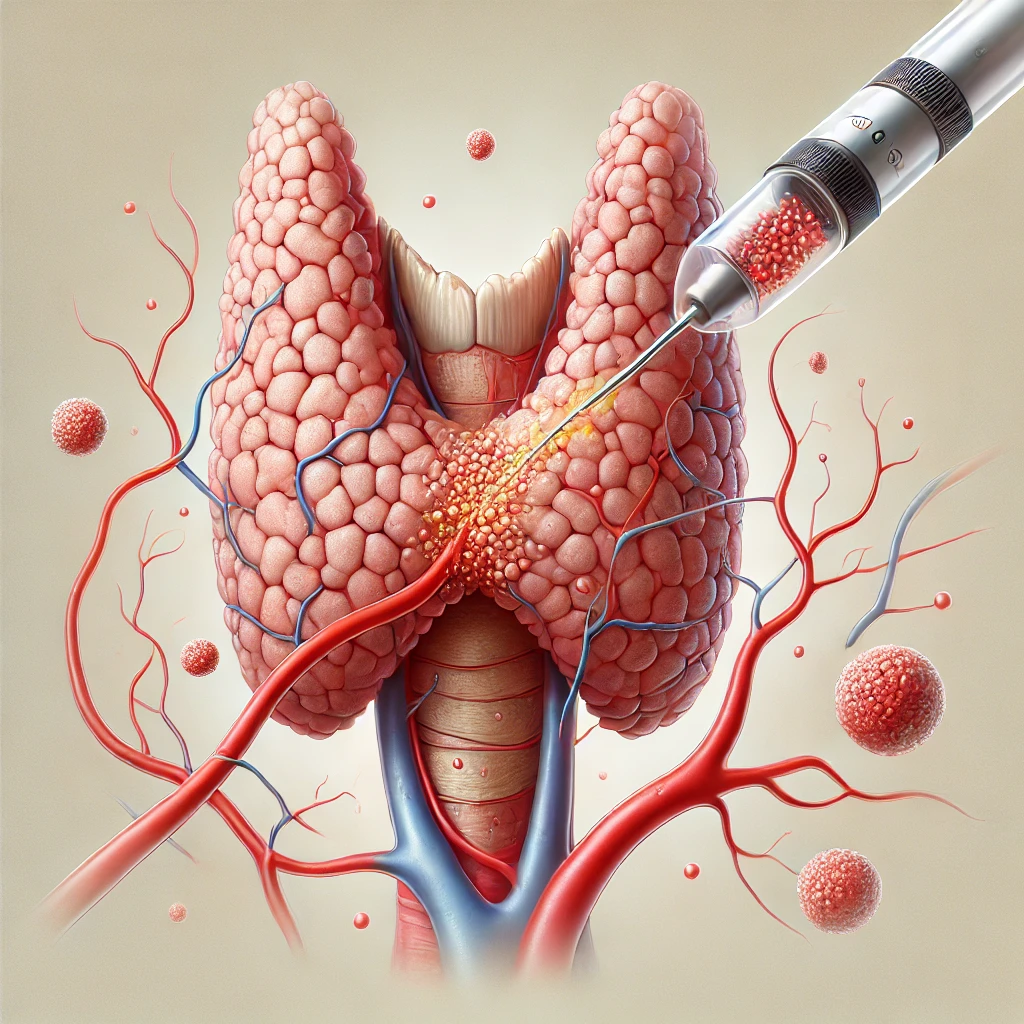Thyroid Goiter Embolization

Thyroid Goiter Embolization
Thyroid artery goiter embolization (TAE) is a minimally invasive outpatient procedure that serves as an alternative treatment to avoid the complete surgical removal of the thyroid gland.
A goiter refers to the enlargement of the thyroid gland. While both men and women can develop a multinodular goiter, women are at a higher risk, especially during pregnancy.
There are three types of goiter: diffuse goiter, nodular goiter, and multinodular goiter. A diffuse goiter involves swelling of the entire thyroid gland, whereas nodular goiter presents with a single nodule, and multinodular goiter involves multiple nodules in the thyroid gland.
Goiters can be classified based on thyroid hormone levels into toxic or non-toxic. Toxic goiters result from high thyroid hormone levels and low thyroid-stimulating hormone (TSH) levels. Non-toxic goiters, however, are associated with normal thyroid hormone levels.
Causes of Thyroid Goiter
Several factors can cause goiter, including:
1. Iodine deficiency: This is the most common cause of goiter, particularly in regions with inadequate iodine supplementation.
2. Overactive thyroid (Hyperthyroidism): Thyroid disorders like Graves’ disease can lead to goiter by causing hyperthyroidism.
3. Thyroid inflammation: Conditions such as thyroiditis (including autoimmune, radiation, suppurative, silent, and postpartum thyroiditis) cause inflammation, leading to thyroid enlargement.
4. Thyroid cancer and other diseases: Thyroid cancer and disorders such as euthyroidism and granulomatous diseases can also result in goiter.
Diagnosis of Multinodular Goiter
A physical exam is typically the first step in diagnosing thyroid goiter. Nodules larger than 1 centimeter can be felt during the examination. Ultrasound is often used if physical findings are inconclusive, distinguishing thyroid nodules from other cervical masses. In cases where the thyroid enlarges enough to displace the trachea, a CT scan or imaging can reveal the extent of thyroid involvement.
Treatment Options for Multinodular Goiter
The standard treatment for thyroid goiter involves surgical removal, known as hemithyroidectomy or total thyroidectomy. However, complete removal leads to permanent hypothyroidism, requiring lifelong hormone replacement. Surgery also carries risks such as nerve injury, infections, and electrolyte imbalances, especially in older patients.
Radioactive iodine therapy is another option for those who prefer to avoid surgery. However, this also increases the risk of hypothyroidism, leading to lifelong hormone supplementation. Percutaneous ablation, while less invasive, may require multiple treatments and is recommended only for patients with one or two nodules.
Recently, Thyroid Artery Goiter Embolization (TAE) has emerged as a minimally invasive and safer alternative.
Thyroid Artery Goiter Embolization (TAE): Procedure
TAE is a non-surgical, image-guided procedure used to treat goiters by reducing blood flow to the thyroid gland. A small catheter is inserted into the thyroid artery, and tiny particles are delivered to block blood flow to part of the thyroid tissue.
A Vascular and Interventional Radiologist performs the procedure, either through an artery in the leg (femoral approach) or the lower arm (radial approach). Patients are given local anesthesia and a mild sedative for comfort.
